FREE AP World History Question and Answers
Which of the following best sums up a reason to question the passage's information's veracity?

Explanation:
The author was a foreigner to the Inca and a Spanish invader. He might not have fully comprehended the practices he saw as a result of communication difficulties brought on by language, culture, and other factors. The answer is (C), thus. Since the author would have interacted with the Inca as a conquistador, (D) is untrue. The section seems to be based on the author's observations rather than written records, hence option (A) is inaccurate. In addition, while the Incas lacked a written language, they did have a method for maintaining records in the form of quipu. Although the author was a conquistador, (B) is wrong because the passage describes a complex political structure. Despite how much the author would have benefited from doing so, the author does not explicitly assert or indicate that the Inca were a primitive society.
Which of the following ultimately caused the system mentioned in the paragraph to collapse?
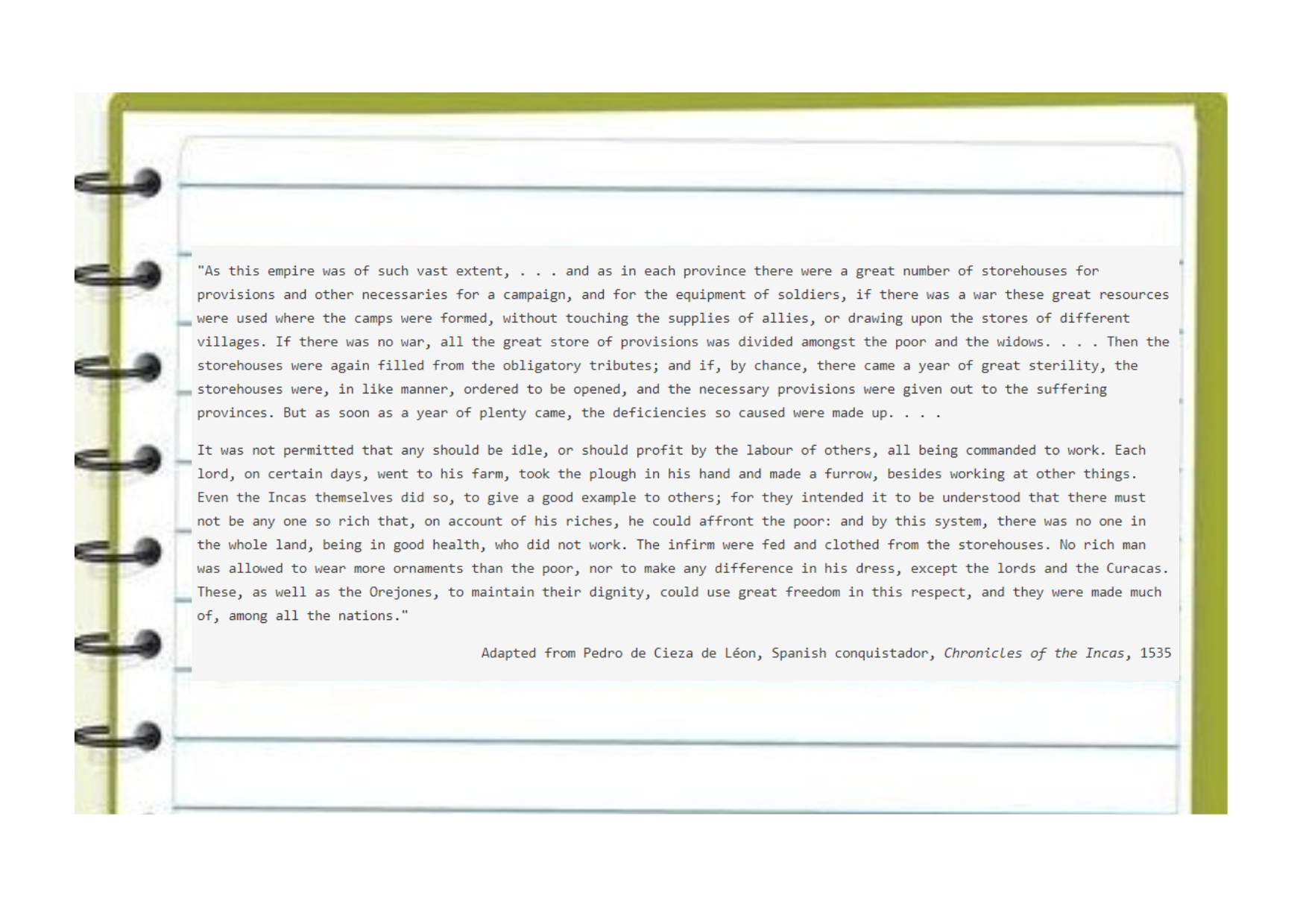
Explanation:
In order to take control of the Incan Empire and occupy the region, the Spanish made use of a civil conflict that had broken out among the Incas. After these things happened, the Incan way of life vanished, hence (D) is accurate. Although (B) would have sounded alluring given that the Incan Empire did indeed collapse soon after a civil war had broken out, the Spanish conquest ultimately led to the demise of Incan civilization rather than the civil conflict. Since the Inca did not overextend their kingdom, (A) is untrue. (C) is untrue due to the Mexica and Inca having only minimal or no touch, therefore the Incan fall was not brought on by battle with the Mexica.
Which of the following best sums up the political system of the group of people mentioned in the passage?
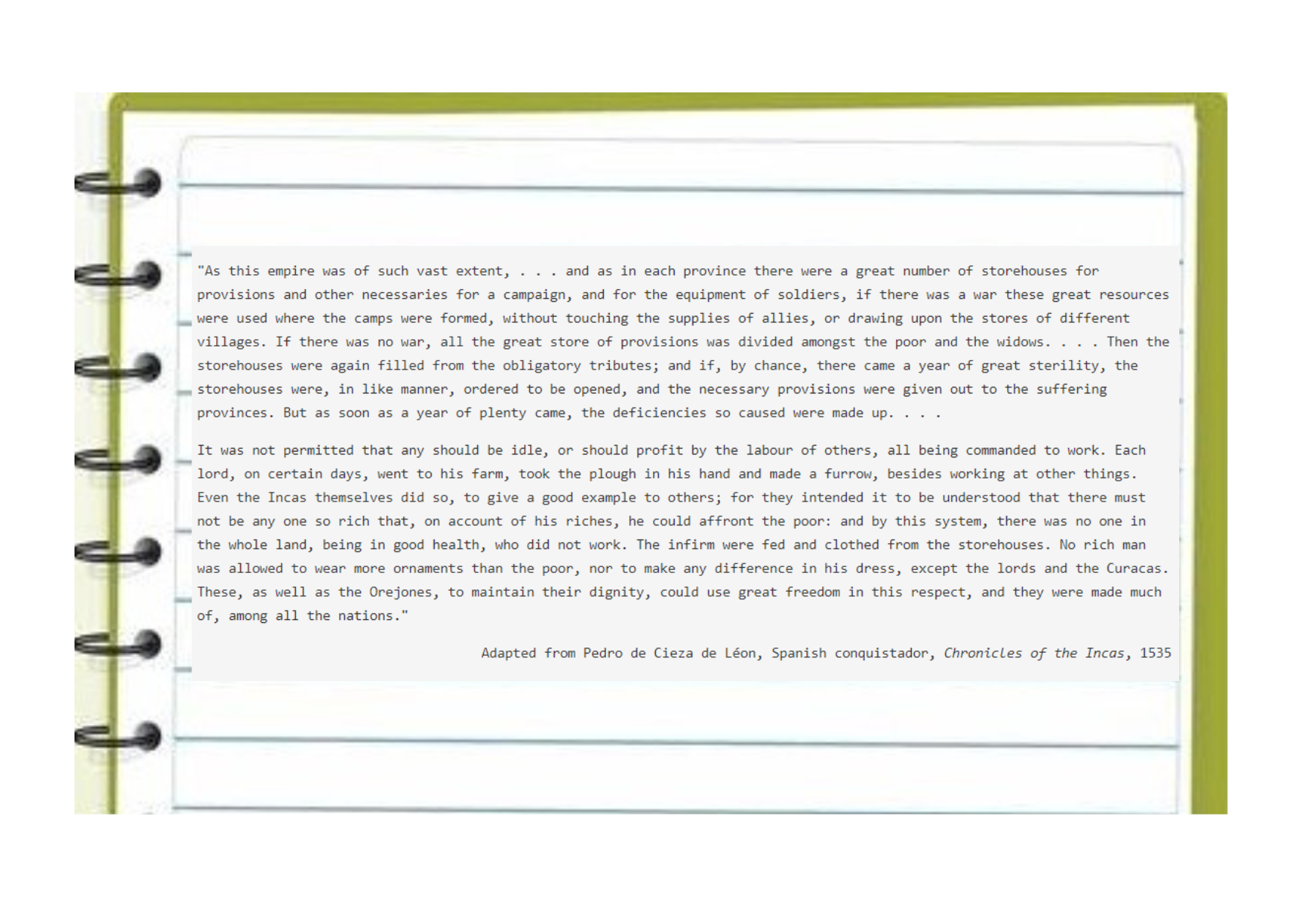
Explanation:
According to the passage, the Incan administration donated food and resources to people in need, regardless of whether they were from the same province or not. This behavior suggests that the government was centralized, hence answer (C) is true. Since the Inca had no contact with Europe before the 16th century, their political system could not have been greatly influenced by European ideology by the time these observations were made. In addition, the redistribution of wealth described in the passage is not comparable to the European political ideology of the time. Therefore, option (D) is incorrect. Although the passage claims that the Incan government promoted equality ("No rich man was allowed to wear more ornaments than the poor"), it is clear that this equality was not absolute because lords, Curacas, and Orejones "could use great freedom" to wear various outfits and ornaments. Accordingly, answer (A) is untrue. (B) is wrong because the Incan government functioned effectively, as indicated in the passage; ultimately, the Incan kingdom fell because European conquistadors and diseases undermined it rather than because it was too huge to function effectively.
Which of the following best explains how the bubonic plague spread as it was described in the opening paragraph?
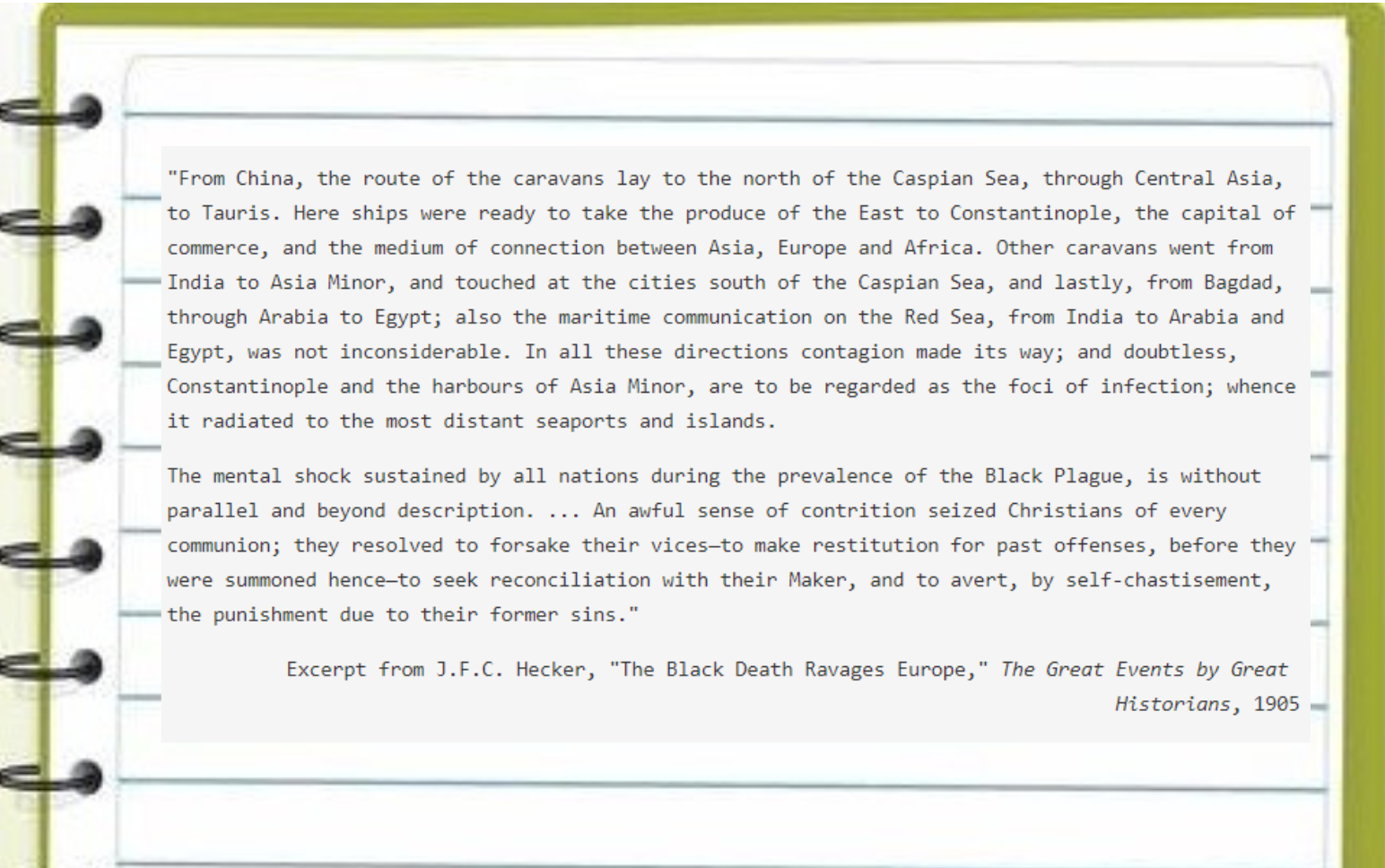
Explanation:
The bubonic plague is described as spreading through trade networks that linked important port towns like Constantinople with other parts of the world in the first paragraph. The answer is (D), thus. The first paragraph has numerous references to marine trade and seaports, making (B) attractive, but it also discusses the importance of caravans, a mode of land transportation, in the spread of the bubonic plague. Additionally, (A) only refers to trade between Europe and Africa, but (B) recounts the spread of the bubonic plague from Asia to the Middle East, Africa, and Europe. (A) and (C) are untrue because, as is said in the second paragraph, many Christians came to their faith as a result of the plague, not because the spread of Christianity was commonly related to the spread of the virus. In addition, (B) implies that the epidemic originated in Europe and spread to Asia while, in fact, it originated in Asia and spread to Europe.
Which of the following would a historian most likely research between 1200 and 1450 using the information in the second paragraph?
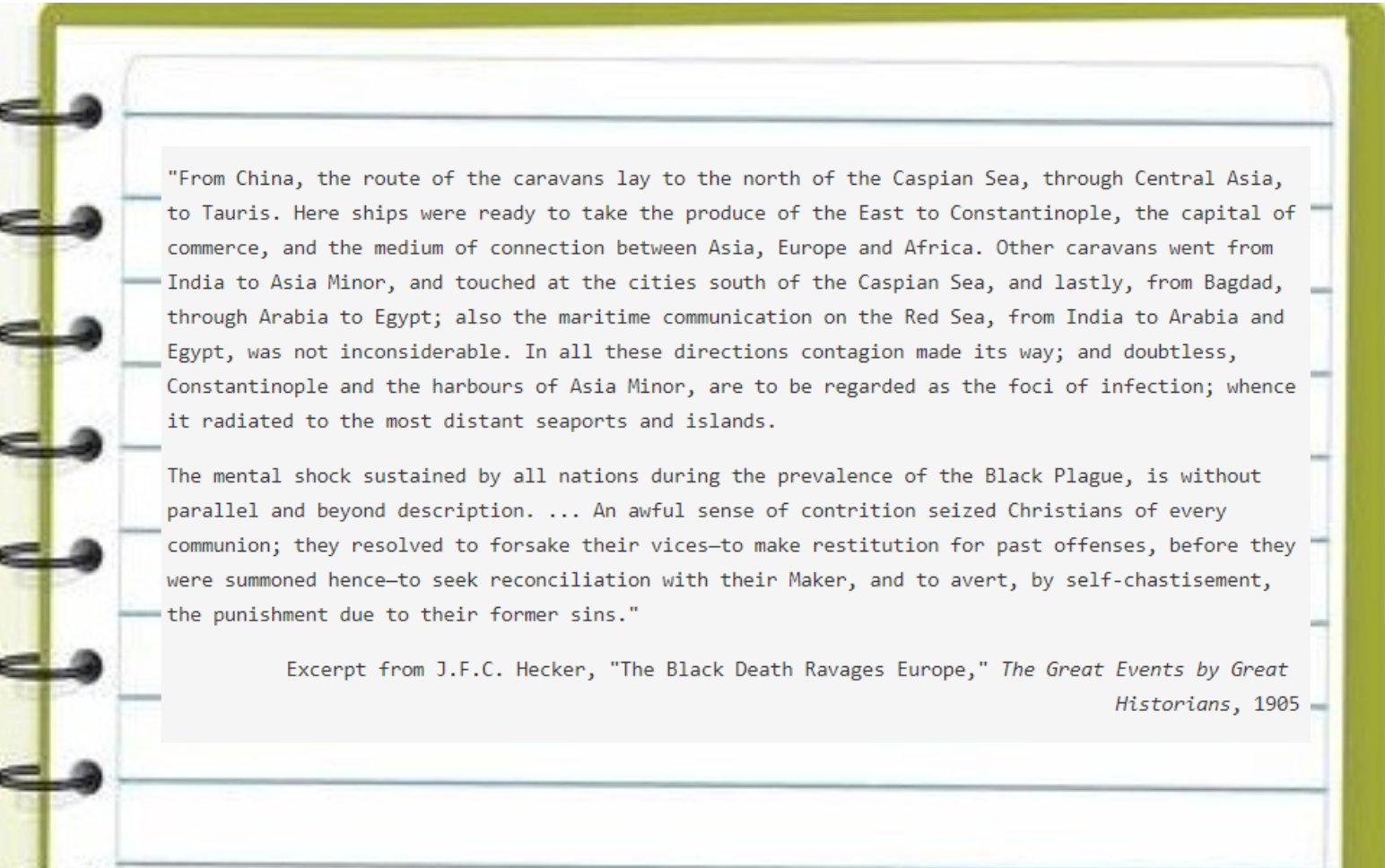
Explanation:
The second paragraph explores how the bubonic plague, a significant worldwide tragedy, affected Christian practice. The scripture claims that many Christians threw up their vices in an effort to escape being punished by God. Thus, (C) is the correct answer since a historian may utilize this material to investigate how world events affected Christian social practices. While Christians in Western Europe interacted with people from other cultural and religious backgrounds throughout this time, nothing in the second paragraph of this passage would be very useful to a historian looking into any of those contacts, hence choices (B), (D), and (A) are incorrect.
Which of the following was a result of the European bubonic plague?
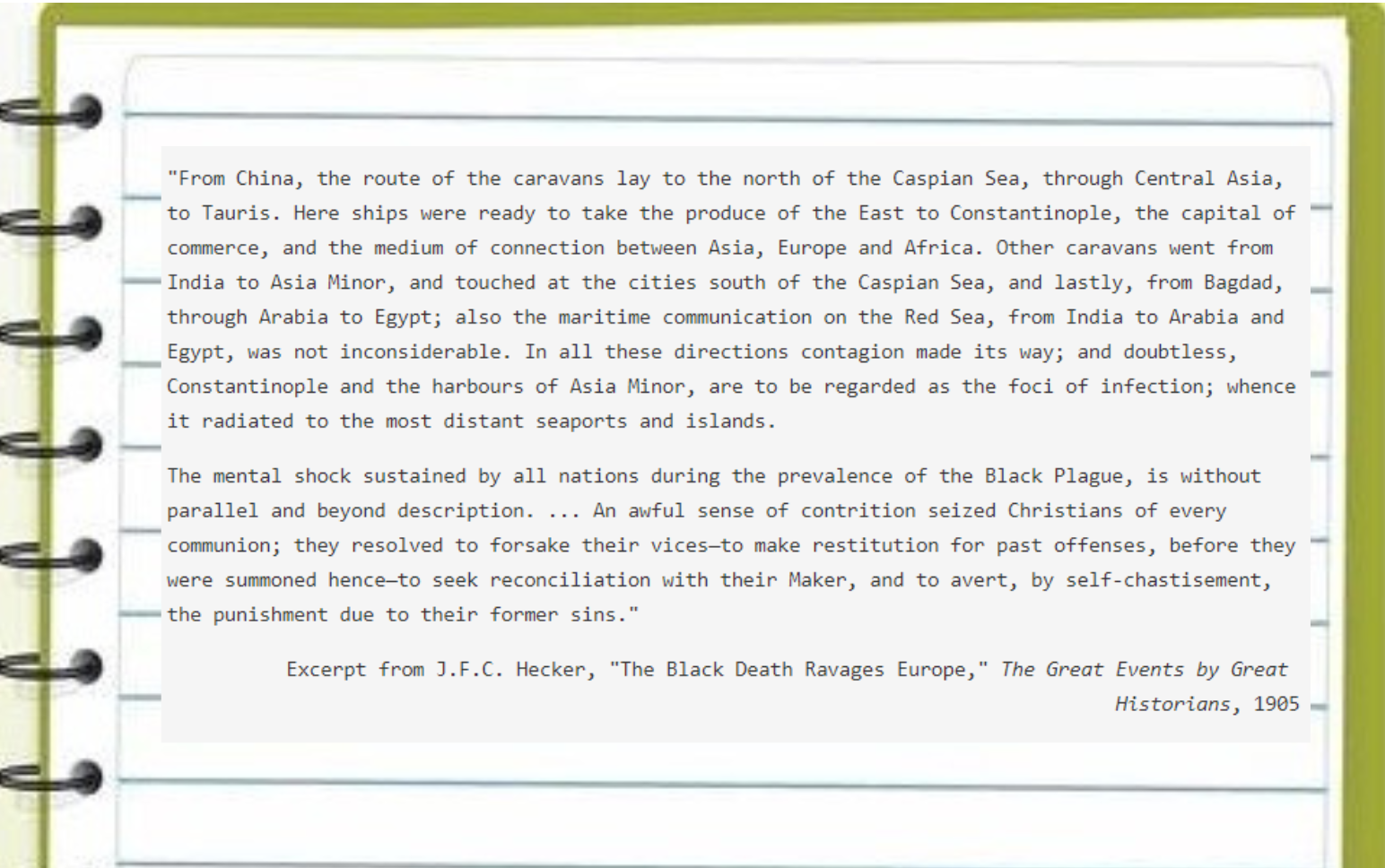
Explanation:
The enormous number of people who died from the epidemic was one of its direct effects. Between 1346 and 1353, the plague claimed the lives of more than half of the people living in Europe. Due to the severe labor shortage that resulted, landowners throughout Europe were in desperate need of farmers and other workers to work on their properties. These modifications weakened Europe's feudal structure by giving low-wage laborers more negotiating leverage. The answer is (A), so. The answers (B) and (D), which bring up the main theme of the passage's first paragraph—trade—might have been alluring. Trade did not stop because of the disease, notwithstanding minor difficulties brought on by the number of deaths, hence (B) is untrue. The epidemic was transmitted via contact between Asia and Europe, but the contact itself, not any specific trade route, was the cause, therefore (D) is also false. The plague did not lead to the discovery of new maritime trade routes. Additionally, very little was understood about how diseases traveled during the bubonic plague era, therefore it is highly doubtful that anyone at the time knew how much trade contributed to the disease's spread. The Renaissance did not directly originate from the bubonic plague, hence (C) is wrong. Some historians contend that the bubonic plague's weakening of the feudal order made it simpler for intellectual and cultural shifts like the Renaissance to occur, but this is, at most, an indirect rather than a direct outcome.
Which of the following best describes how Marco Polo's observations of the Mongols, as portrayed in this paragraph and other works of a similar nature, turned out?
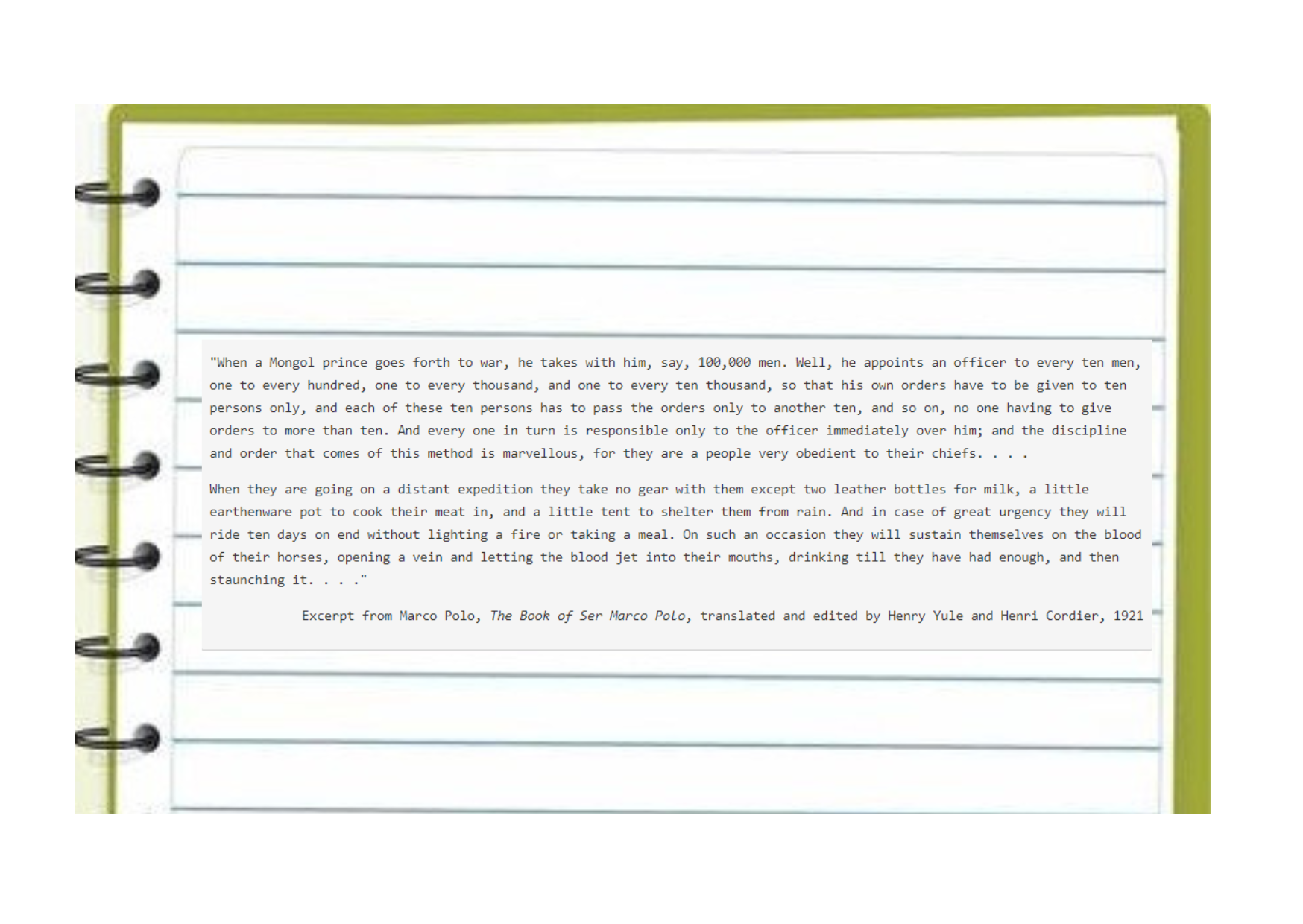
Explanation:
An Italian merchant named Marco Polo visited Asia and wrote up his findings after arriving in Europe. His travel writings inspired Europeans to learn more about Asian culture, which raised demand for Asian items, making (B) the correct answer. No historical evidence suggests that Marco Polo's writings inhibited future travelers from visiting the Mongol Empire; rather, they may have inspired later visitors by piquing their interest in Asian culture, which is why (D) is inaccurate. The answer (A) is untrue because neither the authority of Italian city-states during this time period increased nor were they known to adopt Mongolian military tactics. Last but not least, (C) is erroneous because the Mongol Empire did not collapse into rival tribes rather than being invaded or even defeated by Europe.